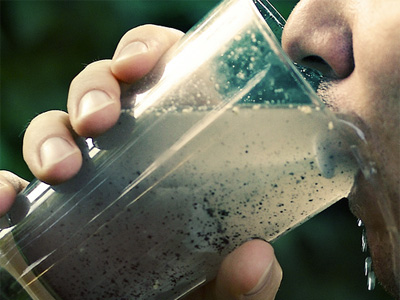Tokyo-based Central Glass and the King Abdul Aziz City for Science and Technology (KACST) today unveiled a novel membrane technology that stands to alleviate the growing shortage of drinkable water worldwide. Scientists at IBM Research, together with collaborators from Central Glass, KACST and the University of Texas, Austin have created a new membrane that filters out salts as well as potentially harmful toxins in water such as arsenic while using less energy than other forms of water purification.
Today, one in five people lacks access to drinking water. According to the World Health Organization, arsenic-contaminated water has been a major health concern worldwide since the 1990s. Arsenic toxicity is cumulative; studies in countries where the population has had long-term exposure to arsenic-contaminated water show that one in 10 people who drink the water may ultimately die from cancers known to be caused by arsenic, including lung, bladder and skin cancer.
Membrane filtration is currently one of the most energy efficient techniques for removing salt and improving water quality. But, conventional membranes used today are easily damaged by chlorine, which is commonly added to water to prevent bacterial growth that can cause health problems. Now, the collaborative research team has designed a new concept in membrane materials that combines resistance to chlorine damage and high performance separation behavior in mildly basic conditions, making it suitable for arsenic removal in addition to water desalination.
“As clean water becomes more scarce and disease from impure water impacts more of the world’s population, the race to find efficient methods to purify this important resource is at a critical juncture” said Bob Allen, manager of the water purification project at the IBM Almaden Research Center. “The kind of research we’re doing, and the promising results we’re seeing, stand to create a whole new paradigm for how we manage natural resources such as water.â€
Because of its unique chemistry, the membrane contains ionizable hydrophobes that undergo a dramatic change when they encounter mildly basic conditions – they become substantially hydrophilic. In short, the membrane, which is made with fluorine materials, transforms from a low water transporting filter to a high water transporting state in a basic environment – what the researchers call a “water superhighway.†Fortuitously, high pH also causes arsenic to become ionic resulting in a relatively easy separation by desalination membranes. Because of these conditions and reactions, when contaminated water is forced through the membrane, the arsenic is filtered out.
“Access to fresh drinking water is more than a regional challenge; it’s a global challenge,†said Dr. Turki AlSaud, vice president for research institutes, KACST. “Currently, Saudi Arabia is the largest producer of desalinated water in the world, and the kingdom continues to invest in research and development to make access to fresh water more affordable. Our collaborative research with IBM is providing innovative technological solutions and paving the way toward cost effective technologies in the field of membranes for water desalination that will help meet the increasing global demand of fresh, clean water.â€
For more information about IBM Research, please visit www.ibm.com/research
For more information about Central Glass, please visit http://www.cgco.co.jp/english/index.html
For more information about KACST, please visit http://www.kacst.edu.sa/default.aspx

help the clean water to go away